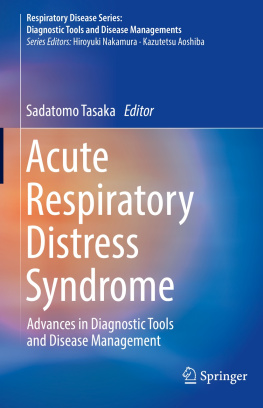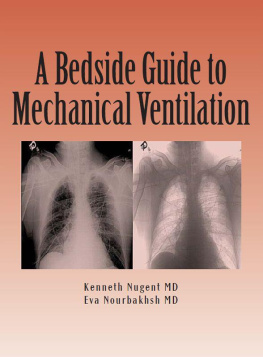Praise for The Ventilator Book from Amazon readers:
"It is a kitschy, fun read (never thought this was possible for something as dry as changing vent settings) - would be a great start for an intern, probably more that you would need to know. Reviews setting changes in a fun, memorable way."
WonkaTron
"This is one of the best books I have ever read on ventilators. It's like a running commentary. It's concise, clear and full of realistic examples introduced at the right time (just before the concepts make you to start scratching your head). Of course as Dr. Owens admits, there are many more detailed books on mechanical ventilation which you can read for more knowledge. This book is so "down to earth" that any beginner can make sense out of it and any expert would agree with what I just wrote above."
Avatar
"Every resident should make their lives easier and get a copy of this book.
I'm an RT and this makes perfect sense. It's simple if you actually know what you're doing...which this book explains how to do perfectly."
Sara Elane
"Excellent review of the fundamentals. Great for ICU fellows up at night. An excellent review also for older attendings 25 years out from their fellowship (yours truly). Good illustrations of ventilator mode variables and excellent text giving sound reasoning for making choices and adjustments in common disease states."
xhighbar
"As a surgical resident working in the ICU, this book was an excellent introduction into ventilator management. Its main strength is in the way it is written. It does not read like a typical textbook but in more of a personal tone. I've recommended it to all of my junior residents and I would recommend it to anyone who is looking to improve their understanding of ventilator management."
SPM88
"Vents finally make sense! Recommend to all medical professionals with any confusion about vents, settings, etc."
D
The Advanced
Ventilator Book
William Owens, MD
First Draught Press
MMXVII
Medicine is an ever-changing discipline and the subject matter of this book is no exception. While the author has done his best to ensure that this book reflects contemporary evidence-based practice, new developments in the field may supersede the material published here. Only properly trained and licensed practitioners should provide medical care to patients with respiratory failure. Nothing in this book should be construed as advice regarding the care of a specific patient or group .
Copyright 2017 by William Owens, MD
All Rights Reserved
Cover Design By Lorien Owens
ISBN 978-0-9852965-2-0
This book is dedicated to the fellows, residents, medical students, nurses, and respiratory therapists whom I have had the privilege to teach over the years. Medicine is neither art nor science, but rather a craft. It requires a commitment to excellence from a craftsman. Paying it forward is part of the deal. This work is my attempt to share what I've learned about critical care medicine with the next generation.
Writing a book is not an easy task, and neither is being a physician. I could not do it without the love and support of Lorien, my wife and fellow adventurer.
Table of Contents
Introduction
The Ventilator Book was written as a guide for students, residents, nurses, and respiratory therapists. It was written with the goal of being a quick reference and an easy-to-read overview of mechanical ventilation. Based on feedback from readers, I believe that it has accomplished its purpose.
The Advanced Ventilator Book aims to take the reader to the next level, while preserving the same format and structure that makes The Ventilator Book a useful reference. This is a book designed for clinicians with some experience in caring for critically ill patients who would like some guidance on how to manage cases of severe respiratory failure. I have written it with the assumption that the reader understands the basics of mechanical ventilation and the pathophysiology of critical illness or injury. The first two chapters get back to the basics, with an overview of oxygen delivery and the concept of permissive hypercapnia. Following this are chapters covering the titration of positive end-expiratory pressure; the management of the patient with severe bronchospasm; the use of prone positioning and therapeutic neuromuscular blockade; inhaled nitric oxide and prostacyclin; veno-venous extracorporeal life support; and a chapter on incorporating all of this into a treatment strategy .
One feature of The Ventilator Book was the emphasis on practical use. Many textbooks and articles describe the rationale for a particular mode of ventilation or therapy, but relatively few actually tell the reader how to do it. The Advanced Ventilator Book provides the same step-by-step guidance to help clinicians put these principles into practice.
The Advanced Ventilator Book also continues the original book's emphasis on support and lung protection rather than cure. No magic bullets are promised, as none exist. Mechanical ventilation for patients with severe respiratory failure has great potential to harm, and so the avoidance of preventable injury is stressed with each topic in the book. The bulk of critical care medicine is supportive in nature, and the treatment of acute respiratory failure is no exception.
Chapter 1
Oxygen Delivery and Consumption
Many textbooks on respiratory and critical care medicine begin with statements like, "Oxygen is the most necessary and basic building block of life." In clinical training, the early application of high-flow oxygen is taught as a life-saving maneuver in emergencies. In the emergency department and intensive care unit, much importance is placed on keeping the pulse oximeter reading over 90% (and usually over 95%); likewise, there is a compulsion to keep the PaO in the normal range of 90-100 mm Hg.
At first glance, there is nothing wrong with this approach. Oxygen is indeed necessary for life, and avoiding hypoxemia is a core part of resuscitation. When treating patients with severe respiratory failure, however, attaining a normal PaO may be either impossible or only possible by the application of injurious airway pressures. Therefore, a more complete understanding of oxygen delivery and consumption is necessary.
Oxygen Content
Each gram of hemoglobin can bind 1.34 mL of oxygen when fully saturated. A small amount of oxygen is also carried in the plasma in its dissolved form. This is represented by the PaO . The solubility coefficient for oxygen in plasma is 0.003. Putting all of this together yields the oxygen content equation:
CaO = 1.34 x Hgb x SaO + [PaO x 0.003]
With normal hemoglobin of 15 g/dL, SaO of 100%, and a PaO of 100 mm Hg, the oxygen content of arterial blood is 20.4 mL O /dL blood. It is important to note that the contribution made by the dissolved oxygen (PaO x 0.003) is very small0.3 mL O /dL blood. The hemoglobin binds 98.5% of the oxygen content. The fraction contributed by the dissolved oxygen is negligible. If the FiO on the ventilator were increased to bring the PaO up to 500 mm Hg (keeping the SaO at 100%), only 1.2 mL O /dL blood would be added to the oxygen content.
Keeping the PaO elevated beyond what's necessary for adequate saturation of the hemoglobin is unlikely to be consequential except in cases of profound anemia (Hgb < 5 g/dL) or hyperbaric conditions. In fact, the PaO can often be ignored when calculating oxygen content and delivery in order to make the math easier. This leads us to the first rule of oxygen: The SaO is what matters, not the PaO .









